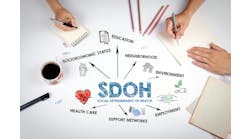The Area Agency on Aging of Broward County (AAABC) is a nonprofit organization serving Broward County's senior residents, age 60 or older. As explained on its website, “The AAA is part of a state network which contains a total of 11 Area Agencies on Aging in the State of Florida which each have their own planning and service areas (PSAs). The AAABC of Broward is designated as PSA 10 and is the only PSA comprised of one county, Broward County.”
Further, “The AAABC also administers the Aging and Disability Resource Center which serves adults over 60 as well as individuals 18 years of age or older who have been diagnosed with dementia or live with a disability. The ADRC is part of a single, coordinated system for information and access to services for all Floridians seeking long-term care resources. The ADRC provides information and assistance about state and federal benefits, as well as available local programs and services.”
In that context, the AAABC is typical of many such agencies nationwide, all of which are doing what they can to support seniors who are living at home, and many of whom are dealing with a range of social issues, including chronic loneliness. Indeed, in an article entitled “Social Isolation and Loneliness in Older Adults: Review and Commentary of a National Academies Report,” published in the December 2020 issue of the American Journal of Geriatric Psychiatry, Nancy J. Donovan, M.D. and Dan Blazer, M.D., Ph.D., wrote that “In a 2020 report from the National Health and Aging Trends Study, prior to the COVID outbreak, investigators found that 24 percent of community–dwelling adults age 65 and older in the United States (approximately 7.7 million people) were socially isolated and 4 percent (1.3 million people) were severely socially isolated.1 , 11. Using data from the nationally representative U.S. Health and Retirement study, Perissinotto et al. found that 43 percent of Americans aged 60 and older reported feeling lonely. Among this sample, 13 percent reported that these symptoms occurred ‘often.’ The AARP foundation undertook a survey and found that 35 percent of adults age 45-plus in the United States reported feeling lonely.” (Drs. Donovan and Blazer further referenced the National Academy of Medicine’s 2020 consensus study report, “Social Isolation and Loneliness in Older Adults: Opportunities for the Health Care System.”)
Given the situation facing so many seniors in Broward County, the leaders at AAABC decided to connect to a “network of networks”—a collaborative of community-based organizations, managed care organizations, healthcare providers, and government agencies, sharing best practices and customized content, connecting thousands of seniors, who engage with live, interactive cultural and wellness programming. And in that context, they’ve been collaborating with the Los Angeles-based Uniper, whose goal, as that company’s website explains it, “is to empower older adults to live a healthy and active social life that is full of interest and meaning – from the comfort of their home. We believe that combining easy-to-use technology with video meetings offers a perfect tool to combat social isolation, create active communities and promote a healthy lifestyle. Uniper’s service provides a social community club service for promoting a healthy lifestyle with the aid of technology that is easy to access and easy to use. Uniper’s service is customized to the needs and preferences of each user, aiming to maximize wellbeing,” the firm’s website explains.
In that regard, Healthcare Innovation Editor-in-Chief Mark Hagland spoke recently with Charlotte Mather Taylor, executive director at the Area Agency on Aging of Broward County, regarding AAABC’s outreach to seniors in Broward County, and her perspectives on the challenges and opportunities involved in connecting area seniors to the appropriate services, some of which involve connection to traditional healthcare services, and others of which involve connecting seniors to community-based services and agencies. Below are excerpts from that interview.
Please tell us about the work of the AAABC.
There are 11 area agencies on aging in Florida, we’re the only one that covers just one county. We provide a variety of services to seniors who are 60 and above. Home repair, legal services, meal programs. We have also home visitations, health and wellness classes that we provide with our staff, including diabetes self-management. Medicare counseling, the SHINE program—a state program [“SHINE” is an acronym for “Serving Health Insurance Needs of Elders,” and is operated by the Florida Department of Elder Affairs and Area Agencies on Aging]. SHINE is the only program that has unbiased counseling for people trying to choose a Medicare program. We also do the screening for Medicaid long-term care. We also operate the elder helpline for the state of Florida, in this area. We provide a lot of different services for Alzheimer’s disease and dementia, including senior and adult day care services. We have a variety of senior services, including daycare services; and a senior intervention program, where we’ll send a nurse out to help people as they’re getting discharged, and if they’re uninsured or don’t have any family members. We also have a program that provides daily or weekly calls, and that’s been extremely important during COVID. And we have a pen pal program, Words for the Wise.
What are your key points of contact with healthcare providers?
When it comes to some of the contractors that we contract with, such as Broward County Veterans, we help provide services in the home. And we have a nurse who will go out to the hospitals and work with the case managers in the hospitals. She will go out and check on them on seniors. We also have hospitals and home health agencies that are on our committees. Our services are more related to the social determinants of health, meant to keep people independent and in their homes.
So what are the key elements in your strategy to address loneliness and social isolation among your senior population in Broward County?
Prior to COVID-19, some of the key elements involved people going to daycare and senior centers and receiving meals. Often, people who needed nutritional support would get at least one meal at the center, and they would interact socially, and that helps with loneliness and isolation. And case workers will check in with them in their homes, and the same with the delivery of meals. We continued the delivery of meals and checking in on people, but we also increased the volume of calls into the home, especially as COVID prevented people from coming into the centers. And the Secretary of Elder Affairs allowed us to pilot two new technologies, Uniper and iN2L (It’s Never Too Late), to leverage [iN2L is a Greenwood, Colo.-based solutions company focused on senior engagement.] And the managers of the senior centers were reporting that our seniors were starting to show real signs of depression, and many of them were seeing their health conditions become aggravated, and just were not as happy. And when we would deliver meals, we were noticing that people wanted to talk longer.
And in terms of Uniper, it’s something comfortable to seniors. Our seniors grew up at a time when we didn’t have a lot of the current technology; and when seniors get older, their eyesight worsens, they have dexterity issues. But when you’re using something like a TV, which people are comfortable with, and you give them a simple device they’re comfortable with, you can see a staff member at a senior center or your son or daughter, or a group of people taking an exercise class, and you can join them. And it’s turned out to be a really strong tool we’ve been using to address this issue of isolation, and the issue of their being alone and becoming depressed—and that exacerbates their health conditions. And during the last month or so, when things were opening up, it’s like an enhancement. So if someone’s not feeling as well and can’t go to the senior center, they can go online or connect with a nurse or physician. And we haven’t done that yet here, but it’s a way to connect through a device that’s really comfortable for them. That’s why I’m so enthusiastic about this technology.
Have you researched levels of isolation in your community?
We haven’t yet, but we’re talking about developing an enhanced strategic plan to look at that issue. We have done studies, per my discussion with the Secretary in the Department of Elder Affairs on these pilots. A study conducted by Uniper showed there was something like a 91-percent-positive rating on the Uniper platform. And so far, the study has shown a decrease in fall risk, which is really big.The data for Uniper is preliminary, but I’m happy to share it with you.
What would you say to patient care organization leaders that they should understand about these social needs?
I’ve actually worked closely with managed care companies, and my husband works for one. And they’ve been using the Uniper program as well, because they realize that if they can help seniors with their emotional states, it’s not only good for seniors, but lowers the health plans’ costs as well. We’ve all heard the anecdotal stories of seniors going to the emergency room just to talk to someone. And I think it would be a smart strategy for physicians as well, to connect in these ways, through technology, with seniors. And I worked for a hospital for 22 years, so I do understand those dynamics as well.
How do you see the next five years, in terms of this work, as well as more broadly, with regard to goals in the healthcare system around the social determinants of health?
Hospitals get penalized for readmissions. It is worth it for them to invest in some type of technology to communicate with the seniors they’ve discharged, so they can help them better take care of themselves, and can give them that emotional support. So often, a person gets discharged, and they’re not feeling well at the time of discharge, and they get home and ask, what did that person say? And you’re going to end up providing better care, and enhancing health status. So this is worth it. And as you know, for health plans, which are cost-focused, if they have a way for their members to communicate better and improve their wellness, they’ll have better-satisfied members, and it will also improve the health of their participants. So I think that one good thing that COVID did was that COVID made it very clear that technology can really enhance any patient care organization’s relationship with their patients.
In other words, we have to focus more on health, not just healthcare, correct?
Yes, because if you focus on health, you’re going to enhance people’s health; you have to get out of sick care and into wellness care. So how do you switch your model to wellness care? That’s what we need to do.


